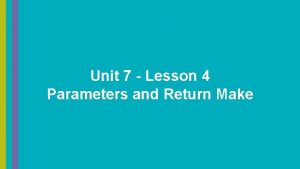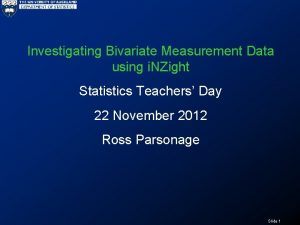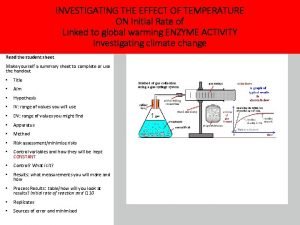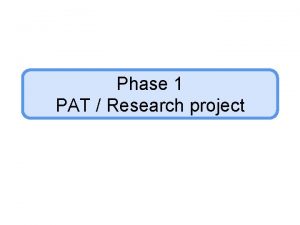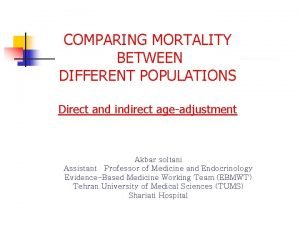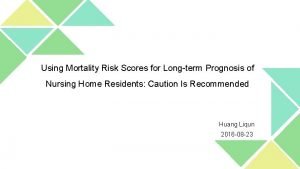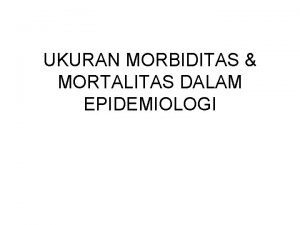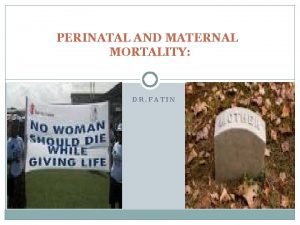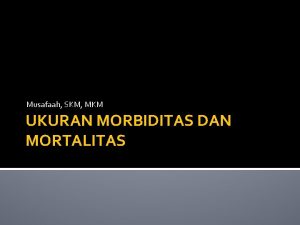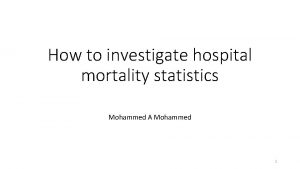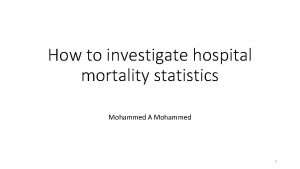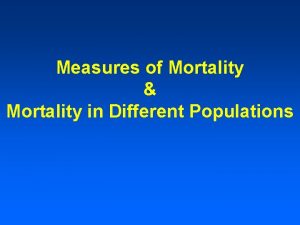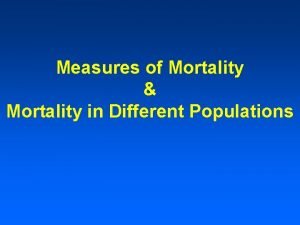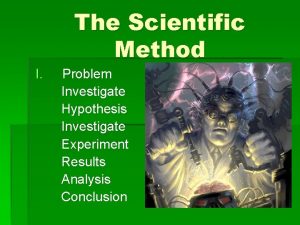How to investigate hospital mortality statistics Mohammed A












- Slides: 12

How to investigate hospital mortality statistics Mohammed A Mohammed 1

Outline • Challenging work • Signal from Noise • Scientific process • Hypothesis generation and hypothesis testing • Pyramid Model of Investigation • Tools • Visualisation using simple run charts • Test for interactions (BMJ 2009) • Case-study 2

Hospital Mortality Statistic • Hospital Standardised Mortality Ratio • Observed Number of Deaths (O) • Expected (from a statistical model) number of deaths (E) • HSMR = O/E *100 • An elevated HSMR could come from • Increase in O • Decrease in E (due to poor care, …) (due to less sick patients, …)

Case-study • Shropshire and Telford NHS Trust • Dr Foster HSMR • 99 (2008/9) increased to 118 (2009/10 – “outlier”) • Two hospitals • RSH and PRT • Why? Mohammed MA, Stevens AJ (2013) A Simple Insightful Approach to Investigating a Hospital Standardised Mortality Ratio: An Illustrative Case. Study. PLo. S ONE 8(3): e 57845. doi: 10. 1371/journal. pone. 0057845 http: //www. plosone. org/article/info: doi/10. 1371/journal. pone. 0057845 4

Predictions (theory) • HSMR increase due mainly to increase in Observed deaths then: • (1) A deterioration in quality of care (not a desktop exercise) • (2) an increase in patient severity not reflected in the expected mortality. • HSMR increase due mainly to fall in Expected deaths then: • (1) A genuine decrease in patient severity accompanied by a deterioration in quality of care (not a desktop exercise) • (2) that the case-mix adjustment model is underestimating the risk of admissions (eg perhaps because of inadequate clinical coding). 5

Investigation method (1) Separately consider the numerator (observed deaths) and denominator (expected deaths) of the HSMR • because this shapes the subsequent investigation process. (2) Visualise the data using simple run charts, • because visualisation is critical to data analysis • “It provides a front line of attack, revealing intricate structure in data that cannot be absorbed in any other way. ” Cleveland WS (1993) Visualizing Data. (3) Make comparisons with other hospitals over the same time period • enabling a form of controlled comparison. 6

Data • We used Sa. TH hospital admissions data • (n= 74, 860) from the Dr Foster Real Time Monitoring computer system • Three year period from April 2007 to March 2010 • 36 months. 7

Table 1. HSMRs for Sa. TH and its two constituent hospitals over three years. 8

Numerator Denominator Plots 9

The Less Severe Admissions Hypothesis 10

Visualising data (using simple run charts) “It provides a front line of attack, revealing intricate structure in data that cannot be absorbed in any other way. ” Cleveland WS (1993) Visualizing Data.

Reflections • Asking why as HSMR is high is very easy • Distinction between excess deaths and avoidable mortality not made explicit • Answer is not straight forward • Desktop exercise • Signal from noise • Often large number of analyses • Credible explanations • Often not conclusive but moderate/high degree of belief • Question of avoidable deaths remains unanswered • Case-note review • Provides approximate answer to the “killer” question • …. . 12
 Lesson 4 parameters and return make rock paper scissors
Lesson 4 parameters and return make rock paper scissors Investigate bivariate measurement data
Investigate bivariate measurement data Where does oedipus send creon at the beginning of the play
Where does oedipus send creon at the beginning of the play Investigate reflection
Investigate reflection Initial rate of reaction
Initial rate of reaction How to investigate a problem
How to investigate a problem Introduction to statistics what is statistics
Introduction to statistics what is statistics Age adjusted mortality rate definition
Age adjusted mortality rate definition Flacker mortality score
Flacker mortality score Mortality vs morbidity
Mortality vs morbidity Ukuran morbiditas dan mortalitas dalam epidemiologi
Ukuran morbiditas dan mortalitas dalam epidemiologi Fatin organ
Fatin organ Statistik kesakitan dan kematian
Statistik kesakitan dan kematian
